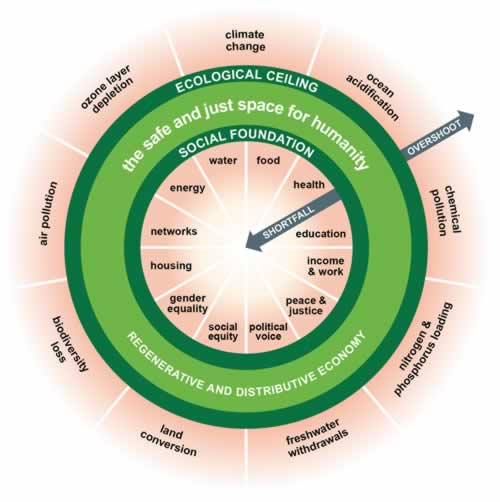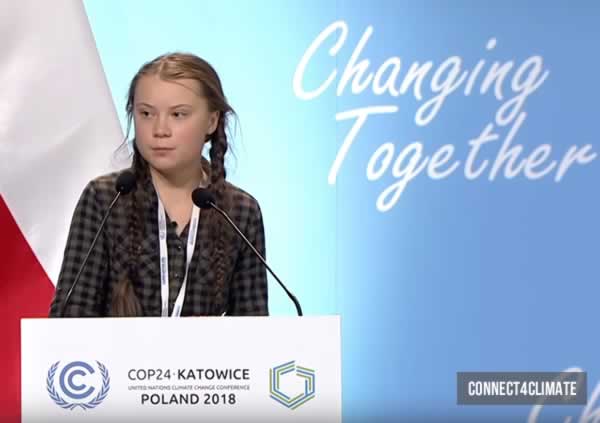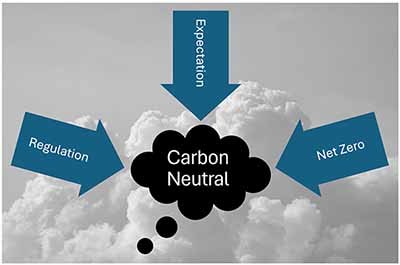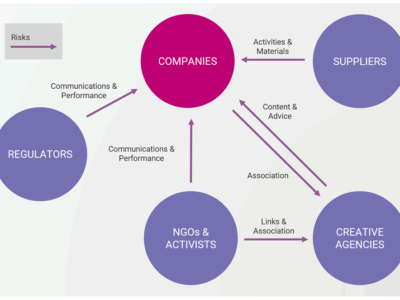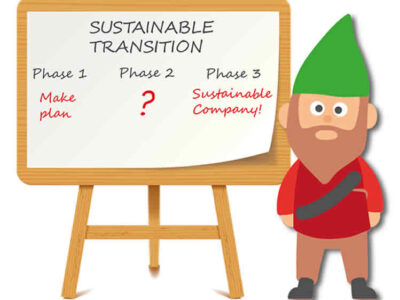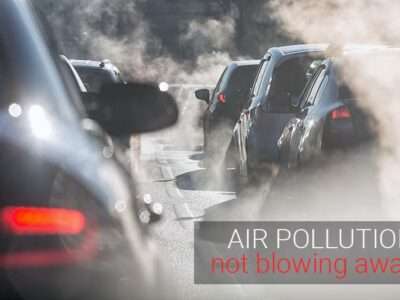“never prophesy, especially about the future”
Samuel Goldwyn
This article was (unsurprisingly written in 2018) – see also 2020 Sustainability Issues >>
What will be the Sustainable business trends in 2019? Last year saw many companies caught out on the issue of plastics, few people expected it to blow up so fast or to catch the public’s attention so deeply or to cause so much disruption.
“If it’s not in my annual management plan then I’m not interested”. That (to paraphrase) is what I was told recently by a senior manager in a leading company. The response begs the question of just which issues make it into strategy and plans and just how can you react to fast moving issues?

Prediction is always a perilous endeavour, but as in previous years we’re having a go at looking what businesses will (or really should be) focusing on in 2019.
To do so we’ve looked at the fast-moving issues which gained momentum in 2018 and at emerging issues that could grow in 2019. We’ve also picked issues that apply or arise in different ways, whether at a company level or in the wider environment or society.
The biggest trends are about a growing awareness of context– i.e. moving beyond doing a good job with respect to peers or sector norms, to assessing and setting performance in the context of the wider world on a quantitative and scientific basis. Related to this is the fact that there are large degrees of interrelatedness and inter-dependency in all sustainability issues. No issue arises, or can be dealt with effectively, in isolation.
There is perhaps, finally, a growing consensus that taking steps to address the challenges that the planet faces are indivisible from saving ourselves. The environment is not separate from us and our wellbeing, and neither is the economy. Global shared intentions such as the UN’s Sustainable Development Goals has helped highlight this, as has Kate Raworth’s Doughnut Economics which graphically (in both senses) made the link between social values and a safe global environment for humanity.
Science-based targets – boiling a frog 1
We’ve long worked with clients to explore how wide/far and fast they should be moving on different sustainability issues. This often includes looking at current best practice – but what if best practice isn’t enough? What if we’re in the classic boiling a frog situation where the ‘environment’ is changing relatively slowly but abruptly meets a perilous position? Science-based targets seek to address this question by using what we know in terms of planetary science to inform the goals we set and the pace at which we need to achieve them. In some areas the science isn’t clear enough to fully support this approach. However, its nearly always still clear what needs to be done or avoided. There is likely to be an increased focus therefore on ‘sustainability context‘ as leading companies strive to set goals and demonstrate positive impacts that are objectively meaningful and not simply based upon relative performance compared to peers.

Biodiversity loss – boiling a frog 2
Frogs are being threatened by more than just metaphors. Amphibians – along with other vertebrates (and invertebrates) are already in metaphorical hot water. WWF and ZSL’s Living Planet Report showed that the Earth has lost c. 60% of vertebrates since 1970. It’s important to understand this isn’t loss of species per se (although species are becoming extinct at an alarming rate too) it’s loss in the number of animals. Put simply there are estimated to be 60% fewer animals alive than these were 50 years ago. That’s a shocking headline, but will it lead to more action on biodiversity? It’s not clear, biodiversity is complex and difficult to engage with, but public and corporate awareness is rising and the need is pressing.
While there’s increased focus on climate change, biodiversity issues are increasingly coming to the fore. As we write, the latest climate conference (COP 24) was closing in Poland (see below). Making fewer headlines was COP (Conference of the Parties) 14. The governing bodies of the Convention on Biological Diversity met at Sharm El-Sheikh, Egypt, where over 190 countries joined to step up efforts to halt global biodiversity loss and protect ecosystems.
The CBD (Convention on Biological Diversity), like the UN Framework on Climate Change, emerged from the Rio Earth Summit in 1992 and in a similar way has an Intergovernmental Science Policy platform (the IPBES). The CBD aims to conserve biological diversity, safeguard sustainable use of biological resources and ensure that genetic resources are fairly shared. In Spring 2019, the IBPES will publish its first assessment of global ecosystems, their state, decline, progress on targets and policy options.
The COP 24 agreed to take measures to meet the Aichi targets as set out in the Strategic Plan for Biodiversity 2011-2020. The conference also agreed on a wide-ranging participatory process for developing a post 2020 global biodiversity framework. It is expected this will agreed in 2020 at COP 15 in Beijing.
EU Sustainable Finance / TCFD ++
Mainstream finance still has a great distance to travel to truly recognise and integrate sustainability issues as sources of material risk which therefore require adequate disclosure. But there is some encouraging action on this front.
In June 2017, The Task Force of Climate-related Financial Disclosures (TCFD), released its recommendations for voluntary climate-related financial disclosures that are consistent, comparable, reliable, clear and efficient, and provide decision-useful information to lenders, insurers, and investors.
The recommendations focus upon the physical, liability and transition risks associated with climate change and what constitutes effective financial disclosure across industries.
In March of 2018, the European Union, in its Action Plan: Financing Sustainable Growth, committed to revise its guidelines on the disclosure of non-financial information in line with the “(TCFD) and the climate-related metrics…Subsequently, the guidelines will be amended to include other environmental and social factors.” (from Action 9: Strengthening sustainability disclosure and accounting rule-making).
As of September 2018, 513 organisations have expressed support for the TCFD recommendations.
Multiple Capitals
The concept of context and multiple capitals continues to grow as a core aspect of sustainability management, as we have noted in previous years.
An approach to addressing what are considered in economics as ‘externalities’ *, multiple capitals refer to a number of conditions, states and sources of value that are either unpriced or under-priced.
Two major initiatives which are developing conceptual and management tools for organisations to recognise and integrate their impacts on multiple capitals are the Natural Capital Coalition and the Social and Human Capital Coalition, producing guidance and tools.
We believe that the coming year should see organisations undertaking strategic assessments of their dependencies, impacts and vulnerabilities in relation to natural and social capitals changes by identifying a series of leading indicators which are likely to meaningfully assess their contribution to the continuing health of those capitals. This would, in turn, provide investors, regulators and society at large with an indication of the potential continued success of that company (and meaningfully describe their relationships with the natural and social systems which they depend upon).
* economic costs and benefits that lie outside or across the boundaries of conventional financial accounting.
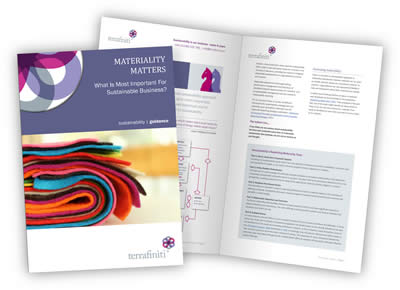
Get essential insights and guidance on Materiality, the Business Case for Sustainability, Developing Sustainable Business Culture and Sustainable Business Culture – and more – with our free sustainable business guides.
Climate – disruptive change
As we know climate change has been rumbling on for years with insufficient action to meet the scale of the challenge.
Delegates to the Global Climate Action Summit in San Francisco September 2018 called upon governments to increase climate action ahead of 2020 after which greenhouse gases need to fall quickly and continue to decrease in order to avoid the worst effects. The Summit was convened by Jerry Brown, California’s state governor and was aimed at governors and other public leaders and business executives rather than national leaders.
There were calls for action in different areas, but including:
- Global Climate Action – a call for global cooperative effort to combat climate disruption and create a safer and more prosperous future for all.
- A call for governments to develop Nationally Determined Contributions (NDCs) by 2020. These empower bottom-up climate action and plot a path to a zero-carbon future consistent with the science and goals agreed in the Paris Agreement.
- A shared investor agenda – formally launched with 400 investors representing US$32 trillion of assets*, the investors are focused on using financial flows to further climate action. Climate Action 100+ includes nearly 300 investors working with some of the highest emitting companies to align then with the Paris Agreement.
The Summit also published the Exponential Climate Action Roadmap which outlines the global economic transformation required by 2030 to meet the Paris Agreement target on climate, sector by sector including agriculture and sustainable energy.
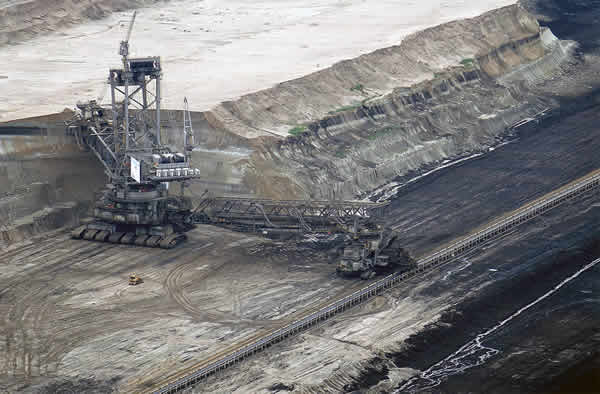
The next Climate Summit in 2019 will focus on the sectors with the greatest emissions.
* While the investors represent/manage funds with these asset values, normally only much smaller figures are invested in low carbon initiatives.
COP 24 Poland
In December, the UN process continued with countries meeting in Katowice Poland for COP 24 to agree the ‘Rule Book’ for how the Paris Agreement will be implemented in 2020.
The conference was mired in disagreement, mainly over how to deal with the UN IPCC’s findings on the risks of overshooting a 1.5 degree rise in global temperatures. The Paris Accord agreed a 2-degree target by 2020 but representatives of many vulnerable countries wanted to amend this to 1.5 degrees. This was resisted by oil-producing countries including the US, Russia, Kuwait and Saudi Arabia. Compromises were made but without full agreement and acceptance of the 1.5 degree target.
Meanwhile, the US has withdrawn from prominence, looking to step away from the Paris Agreement in 2020, China and the EU supported plans for common reporting and accounting systems for emission reductions and the US achieved one of its objectives of ensuring it is subject to similar regulations as China.
“You cannot cut a deal with science, you cannot negotiate with the laws of physics”
Mohamed Nasheed, former president of the Maldives.
So, what was the outcome? The headline is that 196 countries agreed a deal, in the form of a rulebook on the Paris 2015 Agreement – but this masks the significant disquiet felt by many nations.
Any agreement is better than none, however the current pledges on emissions will most likely limit warming to the 3 degrees level, requiring far deeper and faster cuts in the near future if the world is going to meet levels that scientists think are anywhere near safe.
Ironically, the conference venue was decorated with displays of coal. Poland is heavily dependent upon coal for energy generation, the most carbon intensive source of energy.
But perhaps one of the most notable features of the conference was the role of young people. More attended the conference and they made their presence felt. Greta Thunberg, a 15-year-old Swedish student hit social media memes with her daily press conferences and organisation of school strikes. Greta told global leaders: “You are not mature enough to tell it like is, even that burden you leave to us children. But I don’t care about being popular. I care about climate justice and the living planet.”
Plastics
There have been several interesting facets to the plastics phenomenon. Plastics have long been on the radar for sustainability professionals, environmentalists and some NGOs. Plastic micro-beads were the subject of long-running campaigns, and finally action, through voluntary and regulatory action.
This was before Blue Planet II caught the public’s imagination with a tide (pun intended) of awareness, anger and calls for action. Perhaps it was the combination of characteristics, cute animals suffering, the growing awareness that we’re also poisoning own food chain and increased understanding of wider climate and environmental issues. It’s unclear, but it has generated enough momentum for politicians to consider taking action. Like many decisions taken in a hurry, picking alternatives in haste can mean that one ill is substituted for another – albeit with different characteristics. While paper bags for example, don’t have the plastic waste end of life issues, they can drive deforestation, have a higher carbon footprint (they’re heavier to transport by road) and are only likely to be used once by consumers. They are unlikely to be more sustainable*, just have other issues in the trade-off for ‘good’ solution.

One of the most interesting aspects of plastic is the widespread awareness means that businesses of all sizes are encountering requests to reduce plastic use, not just corporates.
* More sustainable – in common parlance this of course really means ‘less unsustainable’ – like other terms such as ‘planet friendly’ etc.
Building Collaboration- evolving the role and responsibility of business
Sustainable outcomes require companies to work outside their boundaries as issues and challenges often lie across the boundaries of any one organisation, country or sector.
Companies are increasingly recognising that they will need to develop new models of partnership and engagement if they are to respond adequately to emerging environmental and social challenges.
This can include:
- Work to adjust the ‘enabling conditions’, values, drivers and rules that can either arrest or accelerate sustainable business.
- Partnerships with organisations in different parts of value chains to achieve wholesale change in the dynamics of these chains – examples would include commodity focused initiative on tea, chocolate, coffee etc (such as those convened by IDH, the Dutch Sustainable Trade Initiative)
Many of these aspects relate to the previous theme of social utility and the notion of common-self-interest. Companies truly engaged in sustainability will need to undertake activities within their own direct spheres of control and influence, but also engage in wider activities designed to evolve norms, values and the rules of business.
Between organisations – corporate activism
The 2018 Trust Barometer Survey from Edelman highlights that consumers are increasing their expectations of companies to undertake activism in social and environmental dimensions.
They found that:
- Trust in companies headquartered in the U.S. has dropped five points from 55 to 50% just in the last year, after having already fallen from 61% in 2014.
- Sixty-four percent of respondents agree that CEOs should take the lead on (social) change rather than waiting for government to impose it.
- 79% of U.S. employees trust their employers to do what is right.
Various collective initiatives have been developed in recent years to address social/environmental issues which are beyond the ability of any single organisation to resolve. This is likely to grow further in 2019, especially as our understanding of the scale of likely climate disruption grows.
Disruption is highly likely in agricultural supply chains, particularly in developing markets. While philanthropic partnerships have long featured in business’s CSR approaches, the understanding of value gained through deeper partnerships continues to grow. This is driven by both value and values. Companies want to engage at a more meaningful level, over longer periods than the superficial aspects of donating money and/or unskilled (as in not using staff competencies in activities) staff time. Longer, deeper engagements are more difficult to nurture but generate greater value for both parties.
For information and guidance on how your company can develop as an activity for sustainable change see Act now for sustainability! Should companies be activists?
Implementation challenges
The evolution of sustainability management in companies has continued, although after a period of growth there’s been some consolidation for many, while the leaders forge ahead.
There appears to be some stalling in implementation as strategies run out of steam or fail to embed. This is normally down to issues to do with leadership and governance. It might appear dull – but it’s serious.
There’s a huge implementation gap – between what planetary science suggests needs to be done, commitments made and real action that can be verified.
What are the challenges? They tend to boil down to the following:
- Not having a plan or strategy
- Having a poor plan that falls short on scope
- A plan that’s isolated on unsupported
- Lack of leadership understanding or support
- Seeing CSR/sustainability as a cost not a value centre
Sustainable capacity within organisations
While the idea of building sustainability skills and understanding at scale within organisations is not a new idea, our work has seen this become an increasing priority that will grow further over 2019.
As sustainability becomes increasingly understood as a strategic priority of value to investors, customers and consumers and the subject of strengthened disclosure and reporting rules, there is also a requirement for sustainability within organisations to the focus of the many, not the few.
Even within some leading companies you can find examples where sustainability is not truly owned by leadership and the organisation as a whole but is still the ‘problem’ of dedicated sustainability managers and teams.
Building wider ownership of sustainability and embedding it within corporate culture is an increasing focus of sustainability management. This is manifesting within companies as leadership which understands that better outcomes are more likely to be realised through spreading understanding and responsibility for sustainability across the organisation, not simply building expertise in single departments.
For an analysis of the challenges and opportunities to build sustainable corporate culture, see Sustainable business culture – how do you nurture it?
Conclusions
Sustainable business trends in 2019 will be moving fast, here is our quick summary:
- More strategic approaches are required – to demonstrate how organisations have analysed what they depend upon and are vulnerable to.
- New issues are emerging which organisations need to recognise, assess, manage and communicate.
- Existing issues are growing in importance to key stakeholders.
- Organisations will need to raise their game in demonstrating how they understand and communicate sustainability in terms of risk, value and opportunity to essential stakeholders.
- Everyone is becoming more interested in meaningful targets and demonstrable impact/progress.
- A focus on building real sustainable cultures is increasingly required.
- Empty promises and lack of consistency won’t cut it any more – real commitment means real change.
DISCOVER MORE | Sustainability Issues
Carbon Neutral Communications
Despite considerable regulatory focus on carbon neutral claims, companies are still getting their communications wrong, so what is happening?
While many large companies now appear wary of making claims about carbon neutrality, we can still see considerable focus on these in the SME space, some …
Reputation risk and sustainability – who do you work with?
Reputation is widely regarded as one the most valuable assets of an organisation. Sustainability can also be an important contributor to both reputation and several dimensions of business value.
In this article we explore different dimensions of reputational risk, how it might be affected and how …
Sustainable Aviation?
On the 28 November 2023, the first long-haul passenger plane powered with ‘sustainable’ air fuel took off. SAF offers an ostensibly attractive path for decarbonisation for the airline industry – the lifecycle greenhouse emissions can be up to 70% lower than conventional fossil-based fuels.
While …
Greenwashing – dimensions of risk
Greenwashing – misleading communications on sustainability issues – has various dimensions of risk, but these are often overlooked, and their implications are insufficiently examined.
While greenwashing may appear as simply irritating, it actually causes a range of harm and presents multiple …
Sustainable transition – waiting for the underpants gnomes?
Dramatic changes are needed in business and industry to head off coming poly crises and build a prosperous future for the growing global population.
But plans for this ‘sustainable transition’ are few and far between and often lack credible substance to bridge the link between ambition and action. …
Avoiding strategic greenwashing – why your business strategy must be plausible
Worldwide regulators are tightening up on strategic greenwashing to protect consumers, business and market integrity. As further examples arise there is more, we can learn about what regulators will tolerate and what they require of companies.
Put simply, any leeway for general feel-good …
WEF Global Risks 2023 – What’s new and what’s changed?
While big picture environmental threats of climate change, nature loss and ecosystem collapse remain long term risks, geopolitical instability and the current cost-of-living crisis challenges present emerging challenges to the chance for global consensus and coordinated action.
The WEF (World …
2023 sustainable business trends and challenges – what to watch out for
From avoiding greenwashing to facing soaring business costs, 2023 is set to be a challenging year for most business leaders to navigate.
Regulators, customers and consumers have increasing expectations for good quality, consistent information on sustainability. Communication must be accurate and …
Sustainable value creation
Understanding the relationship between your organisation and the wider world, and identifying which issues, trends, dependencies and risks are material (important) to your business future is critical. Not just for measuring and managing impact, but also for developing resilience and responding to …
Something in the air – the burden of air pollution
Small particle air pollution – when will we clear it? PM2.5 (small particle) air pollution is one of the most harmful types for human health, exposure has been linked to heart and lung disease, mental health and many other conditions including stroke, cancer and mental health. Air pollution …

